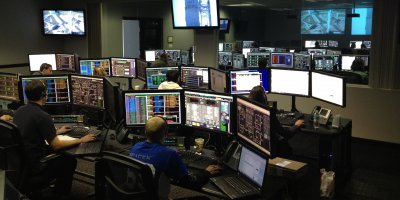
AI will make business leaders smarter | Source: Pexels
Decoding collaborative intelligence and the future of work
ARTIFICIAL INTELLIGENCE (AI) helps businesses spot trends and analyze data to better understand the world around them.
However, to unleash their true potential, enterprises must realize that AI isn’t meant to replace experienced executives who run the business today.
Instead, AI is intended to help today’s business leaders make better, faster, and smarter decisions by collaborating with AI. That’s where the real power of AI lies, according to Accenture’s AI experts Paul R. Daugherty and H. James Wilson.
The experts who’ve recently authored a new book Human + Machine: Reimagining Work in the Age of AI, believe that AI will ultimately reshape businesses and industries by enabling leaders to reimagine and transform their organizations through human-machine collaboration.
I love this shot: @pauldaugh talking about his bk w/ @hjameswilson, out tomorrow. #Human+Machine: Reimagining Work in the Age of Ai. #HBR @Accenture pic.twitter.com/JfkVwvCNH3
— Carolyn Monaco (@CMonaco) March 19, 2018
Daugherty and Wilson feel that AI gives businesses the power to reimagine and transform their processes – whether related to breakthrough innovation, everyday customer service, or personal productivity habits.
To make the most of AI, today’s enterprises must learn the new rules of AI to leap ahead of innovation and profitability and reimagine their business processes.
Based on experience and quantitative and qualitative research with 1,500 organizations, Accenture’s experts believe that while AI will be used to automate some tasks and make some jobs redundant, businesses that use it to augmenting human capabilities will benefit more.
Daugherty, Chief Technology & Innovation Officer, Accenture said:
Our research shows that to fully harness the power of AI, business leaders must change the relationship between employees and machines to one of ‘collaborative intelligence. In other words, AI isn’t about making ‘artificial’ superhumans – but about using technology to give humans ‘superpowers,’ equipping them with new skills and capabilities so that they can achieve more and learn faster.
The collaboration of human and machine is unlocking what the authors call the “third wave” of business transformation.
The first wave, ushered in by Henry Ford, involved standardized processes.
The second wave consisted of automated processes, peaking in the 1990s with the business process reengineering movement.
The third wave has created what the authors refer to as “the missing middle” – a dynamic and diverse space in which humans and machines collaborate to attain orders-of-magnitude increases in business performance.
In the missing middle, humans work with smart machines to exploit what each party does best:
Humans develop, train, and manage various AI applications. Machines, on the other hand, provide humans with significantly enhanced capabilities, such as the ability to process and analyze copious amounts of data from myriad sources in real time.
To exploit the full power of AI, companies must fill the gap of the “missing middle” by considering new employee roles, establishing novel types of working relationships between humans and machines, changing traditional concepts of management, and overhauling their very concept of work itself.
“The unprecedented power of AI to transform businesses is creating an urgent and growing challenge,” said Jim Wilson, Managing Director of Information Technology and Business Research, Accenture Research.
According to the authors, here’s how AI augmentation is reshaping business processes across three categories of human-machine interaction in the missing middle:
- Amplification: AI agents give people extraordinary data-driven insights, often using real-time data
- Interaction: AI agents employ advanced interfaces such as voice-driven natural-language processing
- Embodiment: AI agents work in combination with sensors, motors, and actuators that enable robots to share workspace with humans and engage in physically collaborative work.
The missing middle of #AI
—human only activities
-lead
-empathize
-create
-judge—human-machine hybrid activities
-train
-explain
-sustain
-amplify
-interact
-embody—machine only activities
-transact
-iterate
-predict
-adapt pic.twitter.com/IGmtobFmp2— Vala Afshar (@ValaAfshar) March 14, 2018
Finally, according to the authors, AI shouldn’t be associated with jobs being lost because they also create three brand-new job roles that will help companies deal with the missing middle and help implement AI:
- Trainers: Teaching AI systems how they should perform, helping natural-language processors and language translators make fewer errors and teaching AI algorithms how to mimic human behaviors
- Explainers: Bridging the gap between technologists and business leaders, providing clarity by explaining the inner workings of complex algorithms to nontechnical professionals
- Sustainers: Ensuring that AI systems are operating as designed – i.e., functioning properly as tools that exist to serve us, making our work and lives easier
3 new categories of AI-driven jobs
1. Trainers teach AI systems how they should perform
2. Explainers clarify the inner workings of complex algorithms to nontechnical professionals
3. Sustainers uphold norms of human values + more
Read on: https://t.co/nCFY8QciV0 #AI— MITSloan Mgmt Review (@mitsmr) March 5, 2018
READ MORE
- Ethical AI: The renewed importance of safeguarding data and customer privacy in Generative AI applications
- How Japan balances AI-driven opportunities with cybersecurity needs
- Deploying SASE: Benchmarking your approach
- Insurance everywhere all at once: the digital transformation of the APAC insurance industry
- Google parent Alphabet eyes HubSpot: A potential acquisition shaping the future of CRM




